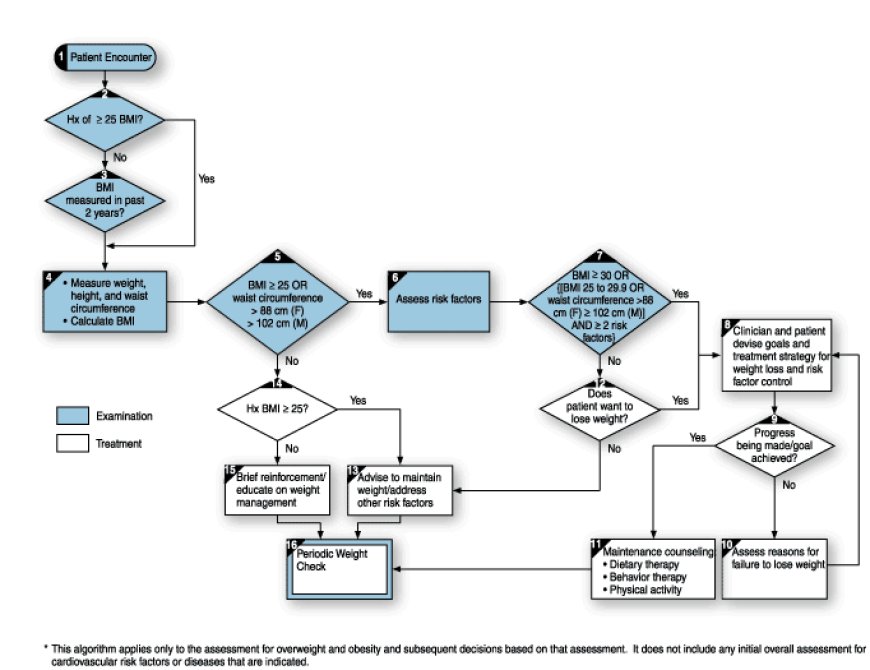Mastering Investment Risk Assessment: A Comprehensive
Introduction & Overview of Investment Risk AssessmentInvesting in the financial markets can be a thrilling and rewarding experience, but it

Introduction & Overview of Investment Risk Assessment
Investing in the financial markets can be a thrilling and rewarding experience, but it also comes with inherent risks. Investment risk assessment is a critical process that helps investors identify, analyze, and manage the potential risks associated with their investments. By understanding and effectively managing investment risks, investors can make more informed decisions, protect their assets, and potentially achieve better long-term returns.
In this comprehensive guide, we will explore the world of investment risk assessment in detail. We will delve into the background and history of this essential practice, examine the different types and categories of investment risks, and provide step-by-step guidance on how to implement effective risk assessment strategies. Additionally, we will cover the essential tools and resources available, explore advanced techniques, and discuss the importance of ongoing monitoring and adjustment to ensure your investment portfolio remains aligned with your risk tolerance and financial goals.
Whether you are a seasoned investor or just starting your investment journey, this guide will equip you with the knowledge and skills necessary to navigate the complexities of investment risk assessment and make more informed decisions that can lead to long-term financial success.
Background and History of Investment Risk Assessment
The concept of investment risk assessment has its roots in the early days of modern finance and portfolio theory. In the 1950s, Nobel laureate Harry Markowitz pioneered the theory of portfolio selection, which emphasized the importance of diversification and the trade-off between risk and return. Markowitz's work laid the foundation for the development of various risk assessment models and frameworks that have since become integral to the investment decision-making process.
Over the years, the field of investment risk assessment has evolved significantly, with the introduction of more sophisticated tools, models, and analytical techniques. The rise of computer-based financial modeling, the availability of vast amounts of market data, and the development of advanced statistical and mathematical algorithms have all contributed to the growing sophistication of investment risk assessment practices.
Today, investment risk assessment is a multifaceted discipline that encompasses a wide range of factors, including market volatility, economic conditions, political and regulatory changes, and even behavioral biases. Investors and financial professionals rely on a variety of risk assessment methods, such as value-at-risk (VaR), Monte Carlo simulations, and stress testing, to gain a comprehensive understanding of the potential risks and uncertainties associated with their investments.
As the financial markets continue to evolve and become increasingly complex, the importance of effective investment risk assessment has only grown. Investors who can accurately identify, analyze, and manage investment risks are better positioned to navigate the challenges of the market and achieve their long-term financial goals.
Types and Categories of Investment Risks
Investment risk is a multifaceted concept that encompasses a wide range of potential threats and uncertainties. Understanding the different types and categories of investment risks is crucial for investors to develop a comprehensive risk assessment strategy. Here are some of the most common types of investment risks:
Market Risk
Market risk, also known as systematic risk, refers to the risk of losses due to fluctuations in the overall financial market. This type of risk is influenced by factors such as economic conditions, political events, and global trends, and it affects all investments to varying degrees.
Credit Risk
Credit risk is the risk of losses due to the failure of a borrower or counterparty to meet their financial obligations. This type of risk is particularly relevant for fixed-income investments, such as bonds and loans, where the investor is essentially lending money to the issuer.
Liquidity Risk
Liquidity risk is the risk of being unable to quickly convert an investment into cash without incurring significant losses. This type of risk is particularly relevant for investments in illiquid assets, such as real estate or private equity, where the investor may face challenges in finding a buyer or exiting the investment in a timely manner.
Interest Rate Risk
Interest rate risk is the risk of losses due to changes in interest rates. This type of risk is particularly relevant for fixed-income investments, as the value of these investments can fluctuate inversely with changes in interest rates.
Currency Risk
Currency risk is the risk of losses due to fluctuations in exchange rates. This type of risk is particularly relevant for investors who hold assets denominated in foreign currencies, as the value of these assets can be affected by changes in the relative value of the currencies.
Operational Risk
Operational risk is the risk of losses due to failures in internal processes, systems, or human errors. This type of risk can affect all types of investments and can include factors such as fraud, cybersecurity breaches, and regulatory compliance issues.
When assessing investment risks, it is important to consider the specific characteristics and risk profiles of different asset classes and investment strategies. For example, investments in stocks may be more susceptible to market risk, while investments in bonds may be more susceptible to interest rate risk. By understanding the different types of investment risks and how they apply to specific investments, investors can develop a more comprehensive risk assessment strategy and make more informed investment decisions.
Detailed How-to Guide for Investment Risk Assessment
Effective investment risk assessment is a multi-step process that involves identifying, analyzing, and managing potential risks. Here is a detailed step-by-step guide to help you implement a comprehensive investment risk assessment strategy:
Step 1: Define Your Investment Objectives and Risk Tolerance
The first step in the investment risk assessment process is to clearly define your investment objectives and risk tolerance. This involves understanding your financial goals, time horizon, and the level of risk you are willing to accept. By establishing a clear understanding of your investment objectives and risk tolerance, you can then align your risk assessment strategies with your overall investment plan.
Step 2: Identify Potential Risks
The next step is to identify the potential risks associated with your investments. This may involve conducting a thorough analysis of the market, economic, and industry-specific factors that could impact the performance of your investments. Some common techniques for identifying investment risks include:
- Reviewing historical market data and performance trends
- Analyzing financial statements and key metrics of potential investments
- Conducting industry and competitive research
- Monitoring news and regulatory changes that could affect your investments
- Seeking input from financial advisors, industry experts, and other trusted sources
Step 3: Assess the Likelihood and Potential Impact of Risks
Once you have identified the potential risks, the next step is to assess the likelihood and potential impact of each risk. This involves analyzing the probability of the risk occurring and the potential financial, operational, or reputational consequences if the risk were to materialize. Some common risk assessment techniques include:
- Quantitative analysis, such as value-at-risk (VaR) and Monte Carlo simulations
- Qualitative analysis, such as scenario planning and SWOT (Strengths, Weaknesses, Opportunities, Threats) analysis
- Stress testing, which involves simulating the impact of extreme market conditions or events on your investments
Step 4: Develop a Risk Management Strategy
Based on your risk assessment, the next step is to develop a comprehensive risk management strategy. This may involve a combination of strategies, such as diversification, hedging, and risk mitigation. Some common risk management strategies include:
- Diversifying your investment portfolio across different asset classes, industries, and geographic regions
- Implementing hedging strategies, such as using derivatives or other financial instruments to offset potential losses
- Establishing stop-loss orders or other risk management tools to limit potential downside exposure
- Regularly monitoring and adjusting your investment portfolio to adapt to changing market conditions
Step 5: Implement and Monitor Your Risk Management Strategy
The final step in the investment risk assessment process is to implement and monitor your risk management strategy. This involves regularly reviewing your investment portfolio, tracking the performance of your risk management strategies, and making adjustments as needed to ensure that your investments remain aligned with your overall investment objectives and risk tolerance.
By following this detailed step-by-step guide, investors can develop a comprehensive investment risk assessment strategy that helps them identify, analyze, and manage the potential risks associated with their investments. By effectively managing investment risks, investors can make more informed decisions, protect their assets, and potentially achieve better long-term returns.
Essential Tools and Resources for Investment Risk Assessment
Effective investment risk assessment requires access to a variety of tools and resources. Here are some of the essential tools and resources that investors can use to enhance their risk assessment capabilities:
Risk Assessment Software and Platforms
There are numerous software applications and online platforms designed to assist investors with investment risk assessment. Some popular options include:
- Portfolio optimization and risk analysis tools, such as Bloomberg Portfolio and Risk Analytics, Morningstar Direct, and FactSet
- Quantitative risk modeling and simulation tools, such as RiskMetrics, @Risk, and Crystal Ball
- Financial data and market research platforms, such as S&P Capital IQ, Refinitiv, and FactSet
Financial Databases and Data Sources
Investors can also access a wealth of financial data and market information from various databases and data sources, including:
- Historical market data and performance metrics from sources like Yahoo Finance, Bloomberg, and Morningstar
- Economic and industry-specific data from government agencies, research institutions, and industry associations
- Credit and counterparty risk data from credit rating agencies, such as Moody's, S&P, and Fitch
Risk Assessment Frameworks and Methodologies
In addition to software and data sources, investors can also leverage various risk assessment frameworks and methodologies, such as:
- Modern portfolio theory and asset allocation models
- Value-at-risk (VaR) and conditional value-at-risk (CVaR) analysis
- Scenario analysis and stress testing
- Behavioral finance and risk perception models
Expert Advice and Consulting Services
Finally, investors can also seek the guidance and expertise of financial professionals, such as investment advisors, risk management consultants, and industry experts. These experts can provide valuable insights, recommendations, and support in developing and implementing effective investment risk assessment strategies.
By leveraging a combination of these tools and resources, investors can enhance their ability to identify, analyze, and manage investment risks, ultimately leading to more informed decision-making and better long-term investment outcomes.
Advanced Strategies for Investment Risk Assessment
While the basic principles of investment risk assessment are essential, there are also more advanced strategies and techniques that investors can leverage to enhance their risk management capabilities. Here are some examples of advanced investment risk assessment strategies:
Scenario Analysis and Stress Testing
Scenario analysis and stress testing involve simulating the impact of various market conditions, economic events, or other external factors on an investment portfolio. By running these simulations, investors can gain a deeper understanding of the potential risks and vulnerabilities of their investments, and develop strategies to mitigate these risks.
Behavioral Finance and Risk Perception
Behavioral finance is a field that explores the psychological and emotional factors that influence investment decision-making. By understanding the biases and heuristics that can affect risk perception, investors can develop strategies to overcome these biases and make more informed, rational investment decisions.
Artificial Intelligence and Machine Learning
Advancements in artificial intelligence (AI) and machine learning (ML) have opened up new possibilities for investment risk assessment. By leveraging these technologies, investors can analyze vast amounts of data, identify patterns and trends, and develop more sophisticated risk models and forecasting tools.
Integrated Risk Management Frameworks
Rather than relying on a single risk assessment method, many investors are adopting integrated risk management frameworks that combine multiple techniques and approaches. These frameworks can provide a more holistic and comprehensive view of investment risks, enabling investors to make more informed decisions and develop more effective risk mitigation strategies.
Continuous Monitoring and Adjustment
Effective investment risk assessment is not a one-time event, but rather an ongoing process that requires continuous monitoring and adjustment. By regularly reviewing their investment portfolios, tracking the performance of their risk management strategies, and making timely adjustments, investors can ensure that their investments remain aligned with their risk tolerance and financial goals.
By incorporating these advanced strategies into their investment risk assessment practices, investors can gain a deeper understanding of the risks and uncertainties associated with their investments, and develop more sophisticated and effective risk management strategies that can help them navigate the complexities of the financial markets.
Conclusion and Next Steps
Investment risk assessment is a critical component of successful investing. By understanding and effectively managing the potential risks associated with their investments, investors can make more informed decisions, protect their assets, and potentially achieve better long-term returns.
In this comprehensive guide, we have explored the background and history of investment risk assessment, examined the different types and categories of investment risks, and provided a detailed step-by-step guide on how to implement effective risk assessment strategies. We have also discussed the essential tools and resources available to investors, as well as advanced techniques and strategies for enhancing their risk management capabilities.
As you move forward with your investment journey, remember to regularly review and update your risk assessment strategies to ensure they remain aligned with your investment objectives and risk tolerance. Additionally, consider seeking the guidance of financial professionals, such as investment advisors or risk management consultants, who can provide valuable insights and support in developing and implementing your investment risk assessment plan.
By mastering the art of investment risk assessment, you can take a significant step towards achieving your long-term financial goals and building a more secure and prosperous future.
What's Your Reaction?
 Like
0
Like
0
 Dislike
0
Dislike
0
 Love
0
Love
0
 Funny
0
Funny
0
 Angry
0
Angry
0
 Sad
0
Sad
0
 Wow
0
Wow
0
































































